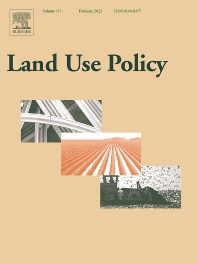The socioeconomic impacts of the CAP: Systematic literature review
Jüri Lillemets – Imre Fertő – Ants-Hannes Viira
Land Use Policy
Volume 114, March 2022,
Highlights
- Employment is by far the most researched and persistent socioeconomic topic.
- Policy changes have had no evident impacts on the investigated topics.
- All topics tend to be evaluated in the context of certain political instruments.
- Impact is positive for economy and employment but not for rural development.
- Effects and effectiveness of the policy are dependent on local conditions.
Abstract
One of the main aims of the EU’s common agricultural policy (CAP) is to promote the development of rural areas. Although there is a rich abundance of academic literature on the impacts of the CAP on rural areas, there has yet to be a comprehensive overview on the effects. The paper aims to fill this gap by providing a systematic literature review on the impacts of the CAP on the socioeconomic situation in EU’s rural areas. A two-stage search procedure to identify the relevant literature is employed. Only 59 publications that estimated the socioeconomic impacts of the CAP were found. The main findings are the following: the reviewed studies have found CAP to have no significant impacts on rural development as an abstract concept and the rural population; positive but negligible effects on economic output, the generational change in farming and gender equality; a positive effect on employment; and limited or inconclusive evidence about the impact on economic diversification, regional cohesion and civil participation.
Keywords: Common agricultural policy, Rural development, Policy impact
Do different types of Common Agricultural Policy subsidies promote farm employment?
Štefan Bojnec – Imre Fertő
Land Use Policy
Volume 112, January 2022
Highlights
- Distinguish different types of policy instruments on different types of farm labor.
- Different types of subsidies diversify farm employment and land use.
- Pillar I subsidies are positively linked to prevailing type of farm employment.
- Farm size increases different types of farm employment.
- The level of different types of farm employment may promote land use.
Abstract
This paper investigates the impact of Common Agricultural Policy (CAP) subsidies on farm employment in Hungary and Slovenia. Econometric models were estimated separately for total farm labor, family labor, and hired labor. We find that total subsidies and, within these, Pillar I subsidies, have positive effect on farm employment of paid labor in Hungary and family labor in Slovenia. Irrespective of the country and type of employment, farm employment is significantly positively associated with farm size. Mixed results are found for Pillar II and investment subsidies. Rural development measures with agri-environmental and less favored area subsidies, and investment subsidies are particularly important for the family farm labor in Slovenia, but not for the paid labor, neither the family farm labor in Hungary. The impact of control regional labor market variables is mixed between the employment of family farm and paid labor within and between the analyzed countries. A strong link between main type of farm employment, different types of CAP subsidies and farm size suggests on the importance of CAP subsidies for maintaining of farm employment and job creation for young and unemployed, and land use policy. This might explain farmers political demand for status quo with only minor CAP subsidy changes, with raising society awareness on monitoring of effective and efficient use of subsidies.
Keywords:Farm employment,Family labor, Paid labor, Common Agricultural Policy subsidies, Farm size, Regional labor market characteristics, Central and Eastern Europe


